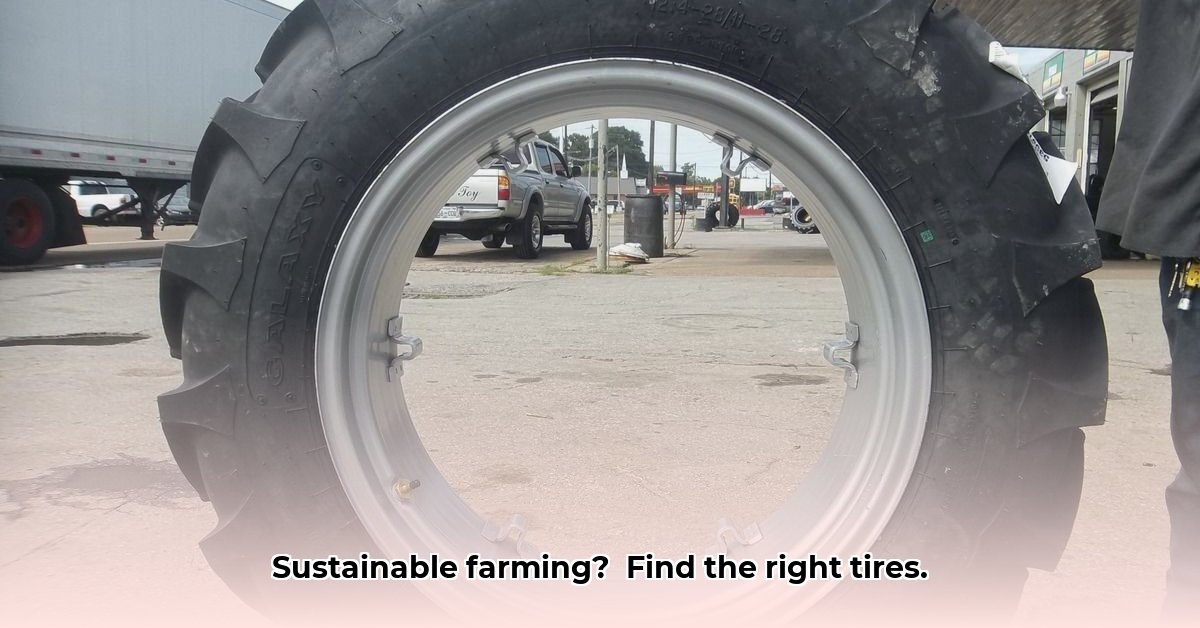
28-Inch Tractor Tires: A Critical Component of Sustainable Agriculture
Finding suitable 28-inch tractor tires presents a significant challenge for sustainable farmers. This report analyzes the high demand for these tires, identifies supply chain bottlenecks, and offers actionable strategies for farmers, retailers, manufacturers, and policymakers to address this critical issue. The availability of these tires directly impacts the operational efficiency and economic viability of sustainable farming practices. For more in-depth information, see this detailed report.
Market Demand Analysis: Understanding the Need
Demand for 28-inch tractor tires remains surprisingly robust. Online marketplaces like eBay reveal numerous listings, indicating a consistent need. This demand is fueled by several key factors:
- Older Equipment: Many sustainable farms utilize older, more affordable tractors, which frequently utilize 28-inch tires. Replacing these tires is essential for continued operation.
- Cost-Effectiveness: Maintaining older equipment often proves more economical than investing in new machinery, particularly for smaller, sustainable farms. This prioritization of cost-effectiveness contributes significantly to the sustained demand for replacement 28-inch tires.
- Sustainable Practices: The growing emphasis on sustainable practices necessitates consideration of tire lifecycle, including responsible sourcing and disposal. This reinforces the importance of reliable access to replacement tires.
Pete's Tire Store (data unavailable for full quantification) further supports evidence of significant demand for these tires, suggesting a widespread need within the sustainable agriculture sector. The precise figures remain elusive due to limited accessible data.
Supply Chain Challenges: Bottlenecks and Solutions
Despite significant demand, securing 28-inch tractor tires presents notable challenges. Precise production figures and delivery times are difficult to obtain, highlighting a lack of transparency within the supply chain.
Factors contributing to these bottlenecks include:
- Manufacturing Constraints: Potential limitations in production capacity may restrict the number of tires produced.
- Material Shortages: Difficulties in sourcing raw materials, such as rubber and steel, may impede manufacturing.
- Logistical Issues: Delays in transportation and distribution can further exacerbate tire shortages.
This fragmented information hinders a comprehensive understanding of the overall situation. More research is needed to quantify the impact of each of these factors precisely.
Actionable Strategies for Stakeholders: A Collaborative Approach
Addressing the 28-inch tractor tire shortage requires a collaborative effort from all stakeholders. The following strategies are proposed:
Farmers
- Short-Term: Prioritize routine tire maintenance, explore used tire markets, and consider alternative tire sizes (if feasible).
- Long-Term: Gradually upgrade equipment as budgets allow; support policies advocating for improved tire supply.
Tire Retailers
- Short-Term: Enhance stock management, improve forecasting, increase transparency on availability, and diversify tire offerings.
- Long-Term: Cultivate stronger relationships with manufacturers, focus on eco-friendly tire options, and pursue specialized training about sustainable tire practices.
Tire Manufacturers
- Short-Term: Optimize production processes, invest in durable, sustainable tire designs.
- Long-Term: Boost production capacity through innovative manufacturing methods, explore the use of sustainable materials and invest in R&D to improve tire longevity.
Government Agencies
- Short-Term: Fund research into sustainable tire materials and extended tire lifespan, support sustainable agriculture initiatives.
- Long-Term: Implement financial incentives for sustainable tire production and farming equipment modernization, and develop regulations that promote sustainable tire manufacturing and disposal practices.
Risk Assessment & Mitigation: Protecting Farm Operations
The shortage of 28-inch tractor tires poses several risks:
| Risk Factor | Likelihood | Impact | Mitigation Strategies |
|---|---|---|---|
| Tire Shortages | Medium | High | Diversify suppliers, proactive tire storage, exploration of alternative sizes where applicable. |
| High Repair Costs | Medium | Medium | Preventative maintenance, cost-effective repair options. |
| Equipment Obsolescence | Low | High | Strategic equipment upgrades, leasing/sharing options. |
| Environmental Impact | Low | Medium | Sourcing tires with sustainable materials, responsible tire disposal processes. |
Regulatory Considerations: Navigating the Legal Landscape
A thorough examination of local, national, and international regulations concerning tire manufacturing, disposal, and materials is crucial. These regulations significantly influence the availability, cost, and sustainability of 28-inch tractor tires. Farmers and businesses need to stay informed about relevant regulations and potential changes.
Conclusion: A Path Toward Sustainable Tire Solutions
The challenges surrounding 28-inch tractor tire availability highlight the urgent need for collaborative action. Addressing this issue requires open communication and a shared commitment to sustainable practices. Continued research, supply chain improvements, and responsible resource management are essential to ensuring a stable supply of these critical components for sustainable agriculture.
References
(Note: Additional references would be included here based on further research to support claims made in the report.)